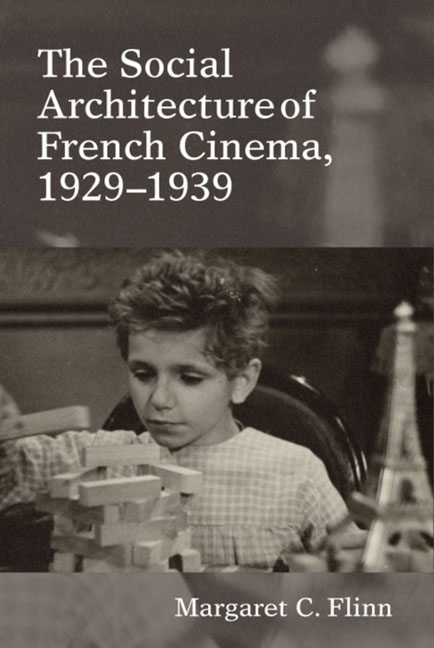Book contents
- Frontmatter
- Contents
- List of Illustrations
- Acknowledgements
- Introduction: An Architecture of Social Being
- 1 The Spatial Constitution of 1930s Documentary
- 2 René Clair's City Views: Realism and Studio Paris
- 3 Intertext and Political Margins in Jean Renoir's Boudu sauvé des eaux
- 4 Traversing Built History in Architectural Documentaries
- 5 Flâneuses and the Unmaking of Place
- 6 The Crowd as New Monumentality during the Popular Front
- Epilogue: Poetic Realism as Spatial Fable
- Notes
- Bibliography
- Filmography
- Index
5 - Flâneuses and the Unmaking of Place
- Frontmatter
- Contents
- List of Illustrations
- Acknowledgements
- Introduction: An Architecture of Social Being
- 1 The Spatial Constitution of 1930s Documentary
- 2 René Clair's City Views: Realism and Studio Paris
- 3 Intertext and Political Margins in Jean Renoir's Boudu sauvé des eaux
- 4 Traversing Built History in Architectural Documentaries
- 5 Flâneuses and the Unmaking of Place
- 6 The Crowd as New Monumentality during the Popular Front
- Epilogue: Poetic Realism as Spatial Fable
- Notes
- Bibliography
- Filmography
- Index
Summary
All cities would be the same if they were not distinguished by their monuments.
—Alberto Cavalcanti, Rien que les heures, 1926Paris, Paris, oh infamous and marvelous city […].
—Michel Simon as Père Jules in L'Atalante, 1934Up to this point, this book has examined the way filmed constructions of space are “successful” in that we can theoretically conclude that a narrative of place has produced a readable meaning or a meaningfully readable locale. Both documentary and fiction films mobilize real locations, as we have seen in Chapters 1 and 2. Often, these are monumental sites, such as the obelisk in La Zone, which serves as a critical contrast to the poverty in the shantytowns of the Zone. In the films of René Clair, urban landmarks shore up spatial verisimilitude. In Chapters 3 and 4, the history of recognizable constructions was interrogated in relationship to the fictional or historical narratives in which they appear. In the remaining chapters, however, the notion of space becomes dysfunctional, fractured, or ephemeral. In essence, the spaces produced in films are negative spaces—negative in the sense that that they “don't work”; they are not livable, accessible, or real, at least for certain characters. This chapter focuses on a gendered reading of urban space, showing how when characters move through such spaces, their trajectories are conditioned by their social status, of which gender is a crucial part.
The chapter's focal point is Jean Vigo's 1934 film L'Atalante. I read this film alongside Marc Augé's 1992 Non-lieux: introduction à une anthropologie de la surmodernité. Indeed, Vigo's representation of city space anticipates Augé's analysis of late twentieth-century hypermodernity: while certain technological transformations have not yet arrived (expressways, commercial airports, etc.), the city of high modernity in fact already demonstrates many of the salient characteristics of Augé's model. L'Atalante unfolds in spaces that are not places, suggesting that the cinema itself is a non-place, but one that produces, constructs, and, indeed, consecrates new places—particularly for women. City films of the late 1920s and early 1930s, such as Georges Lacombe's La Zone, Alberto Cavalcanti's Rien que les heures, Marcel Carné's Nogent, Eldorado du dimanche, and Vigo's own À propos de Nice, provide a counterpoint.
- Type
- Chapter
- Information
- The Social Architecture of French Cinema1929–1939, pp. 112 - 136Publisher: Liverpool University PressPrint publication year: 2014



